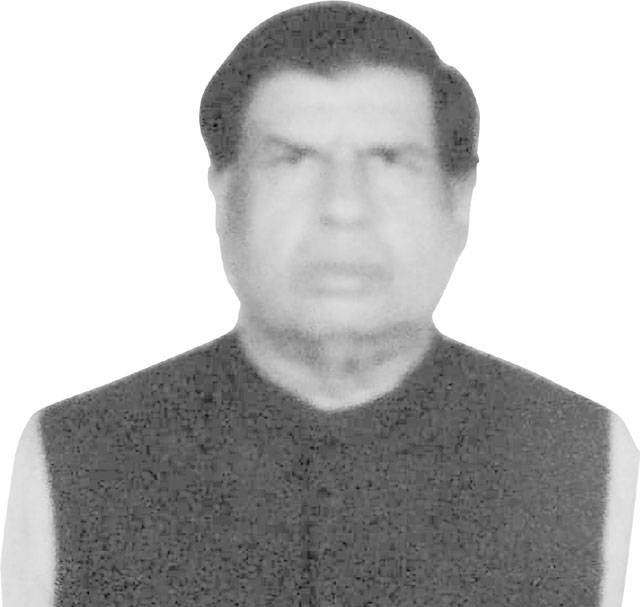Digitisation is being introduced, encouraged and promoted in every sector of the national economy and activities both in public and private sectors in order to keep pace with scientific and technological innovations around the world. In furtherance of this quite appreciable objective and efforts, the 7th Population and Housing Census is being held in the country in February and March of 2023.
The Population and Housing Census, according to experts, is a vital national exercise which is linked with the provision of the latest data for key policy-making matters regarding development programmes, political representation and resource allocation at the federal, provincial and other levels.
A national census is mandated by the Constitution of Pakistan to be held every ten years. But there have been instances, quite unfortunately, that the census has either been delayed considerably or held earlier than the stipulated period for varying reasons in the country’s politically chequered history of 75 years.
According to information available from official sources, the first-ever Digital Population and Housing Census are being held on the basis of comprehensive recommendations made by the Census Advisory Committee earlier last year. The main recommendations of the Census Advisory Committee include; conducting the census digitally with real-time online monitoring and geo-tagging of all structures. It must ensure universality, counting of the whole population residing in the country. De-jure method of enumeration is recommended. A Single Census questionnaire may be administered which must be strictly in relevance to the objectives of the census. Law enforcement agencies may be used for security but not for enumeration.
Furthermore, field data collection and monitoring may be carried out by provincial governments’ staff. Comprehensive trainings and involvement of graduate students in the remuneration process is recommended. Involvement of stakeholders from start to finish. Establishment of a National Census Coordination Centre (N3C) with representation of provincial governments for effective monitoring coordination and policy decisions. Effective publicity campaign with effective use of social media or clarity regarding the primary objective of census which may begin early and extend right up to the release of the first initial results.
Statistically speaking, after the independence of Pakistan in 1947, the first census took place in February 1951. The Dominion of Pakistan, both West and East Pakistan had a population of 75.3 million of which West Pakistan had a population of 33.7 million and East Pakistan (now Bangladesh) had a population of 42 million.
The second population census was conducted in January 1961.The population was 93 million with 42.9 million residing in West Pakistan and 50 million residing in East Pakistan.
Following the dismemberment of Pakistan and East Pakistan in 1971, the third census was held in 1972 according to which, the population of Pakistan was 65.3 million.
The fourth decennial population census of Pakistan was conducted in March 1981. According to the 1981 census, the population of Pakistan was 84.3 million.
The fifth population census was held in 1998 after a delay of 8 long years instead of 1991. The population of Pakistan then was 132.4 million.
The sixth census was conducted in two phases in 2017. According to the results, the country’s population was 207.7 million with an annual growth rate of 2.4 percent.
As is generally said and believed, figures speak much louder than words. The figures given above indeed reflect an alarming picture of the rapid population growth of Pakistan at a pace not in line with the national resources available. It is also indicative of the fact that all population welfare measures over the years have failed miserably to produce desired results as the population continues to grow unabatedly. More about the population growth bomb which is feared to explode with severe negative and quite disastrous consequences any time sometime later.
Thursday, November 21, 2024
Digital population census

Spectacular airshow and military demos thrill crowds at IDEAS 2024
6:08 PM | November 21, 2024
PM Shehbaz awards Rs 5m to FBR officer for preventing major tax fraud
5:39 PM | November 21, 2024
ECP disqualifies Adil Bazai under Article 63A, declares NA-262 seat vacant
5:36 PM | November 21, 2024
Kazakh deputy FM meets Pakistan's industry minister for cooperation talks
4:16 PM | November 21, 2024
Imran Khan remanded in police custody for five days in New Town case
4:03 PM | November 21, 2024
-
Hunger crisis to increase in South Sudan, warns UN
-
Hunger crisis to increase in South Sudan, warns UN
-
Pakistan’s judiciary champions climate justice at COP29 in Baku
-
Punjab struggles with persistent smog as Met Office forecast rainfall
-
Punjab residents face escalating smog crisis as pollution levels soar across country
-
Qatar says Hamas 'no longer welcome' in Gulf state
Land of Vigilantes
November 21, 2024
United in Genocide
November 21, 2024
Finally Fighting Back
November 21, 2024
Digital Stagnation
November 20, 2024
Xi’s Red Lines
November 20, 2024
Independent Supreme Court
November 21, 2024
Fat Loss Fantasy
November 21, 2024
Tackle Corruption Within School Boards
November 20, 2024
To Be Opportunistic
November 20, 2024
Democratic Backsliding
November 20, 2024
ePaper - Nawaiwaqt
Nawaiwaqt Group | Copyright © 2024





